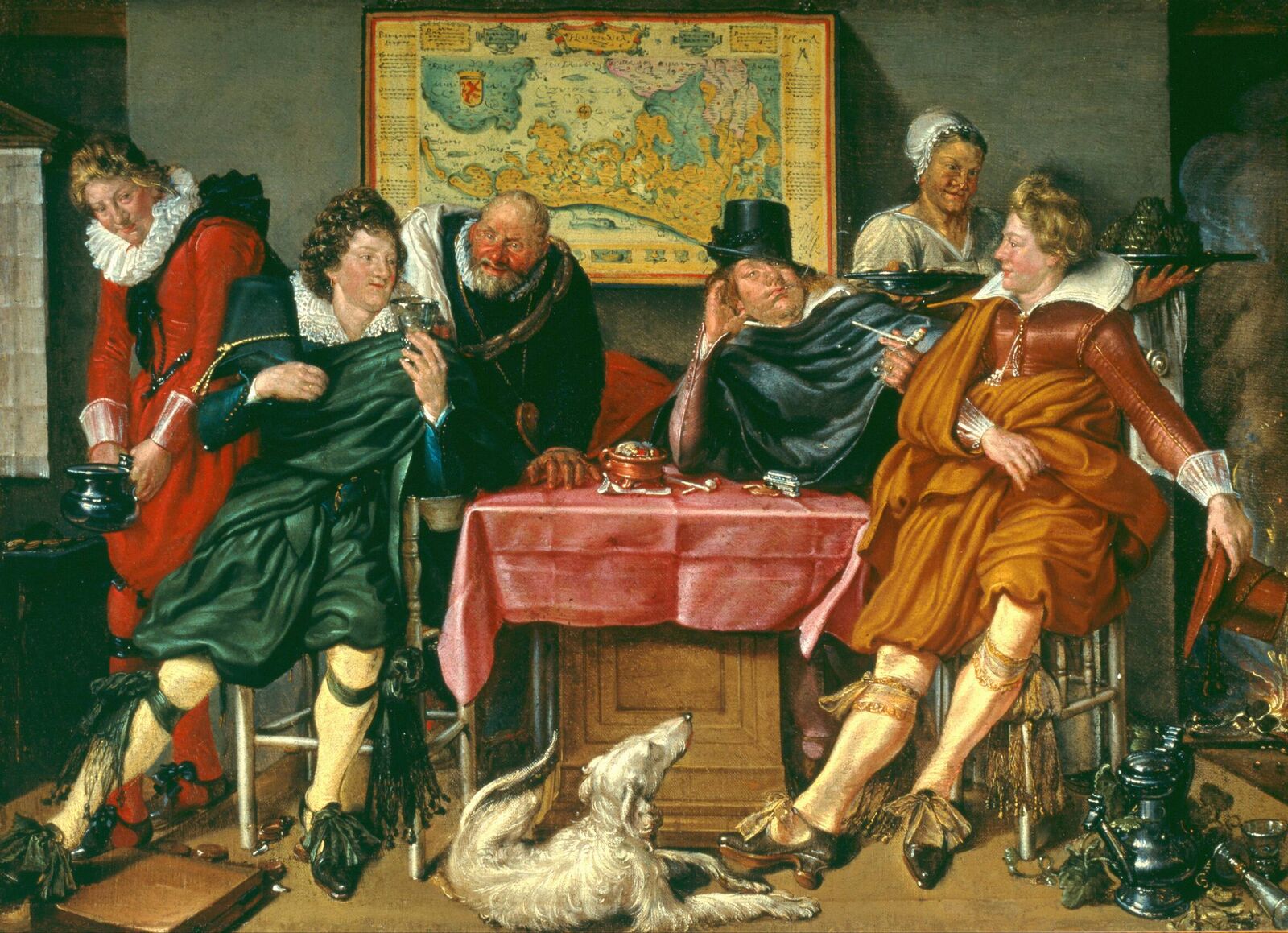Dirck Hals, Merry Company at Table, 1627–29
Merry company
is the term in art history
for a painting, usually from the 17th century, showing a small group of
people enjoying themselves, usually seated with drinks, and often
music-making. These scenes are a very common type of genre painting of
the Dutch Golden Age and Flemish Baroque; it is estimated that nearly
two thirds of Dutch genre scenes show people drinking.
The term is the usual translation of the Dutch geselschapje, or vrolijk gezelschap,
and is capitalized when used as a title for a work, and sometimes as a
term for the type. The scenes may be set in the home, a garden, or a
tavern, and the gatherings range from decorous groups in wealthy
interiors to groups of drunk men with prostitutes. Gatherings that are
relatively decorous and expensively dressed, with similar numbers of men
and women, often standing, may be called Elegant Company or Gallant Company, while those showing people who are clearly peasants
are more likely to use that word in their title. Such subjects in
painting are most common in Dutch art between about 1620 and 1670.
Willem Pietersz. Buytewech, Merry Company, c. 1620, apart from the maid an all male group
Prostitution is clearly indicated in this scene by Gerard van Honthorst of 1623, complete with aged procuress, low cleavage, and a feathered headdress on the second girl.
Abraham van den Hecken, A Merry Company in a Tavern, 1640s
Jacob Ochtervelt, Musical Company in an Interior, c. 1670
Simon de Vos, 1630s; according to the owning museum "Well-bred young ladies did not join parties in public inns; these smiling women are prostitutes".
Jacob Duck, 1635-40
Jan van Hemessen, The Prodigal Son, 1536
Peter Paul Rubens, Garden of Love, 1630–35, the apotheosis of the outdoor courtly company
Adriaen Brouwer, Inn with Drunken Peasants, 1620s









_(alta_resoluci%C3%B3n).jpg)

No comments:
Post a Comment